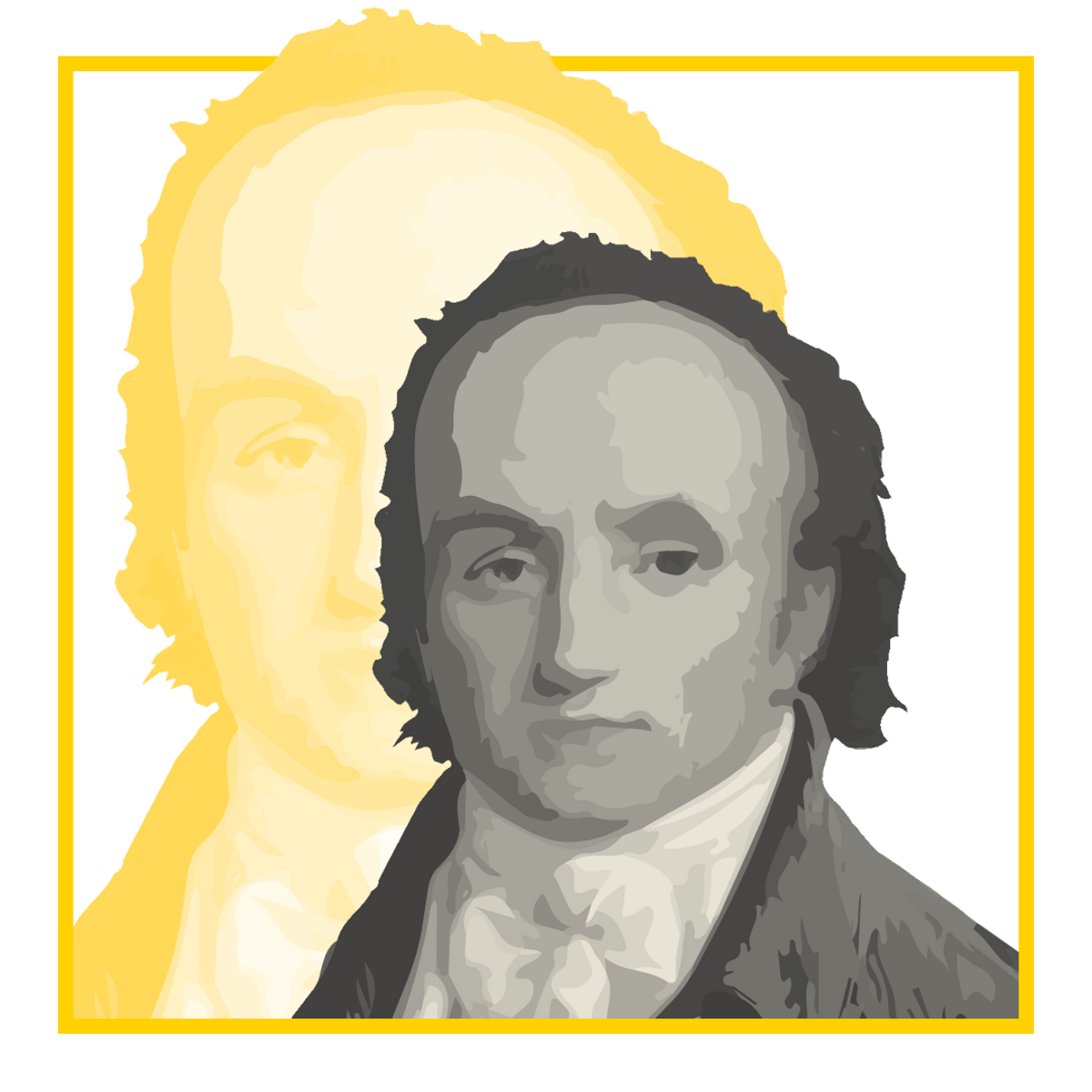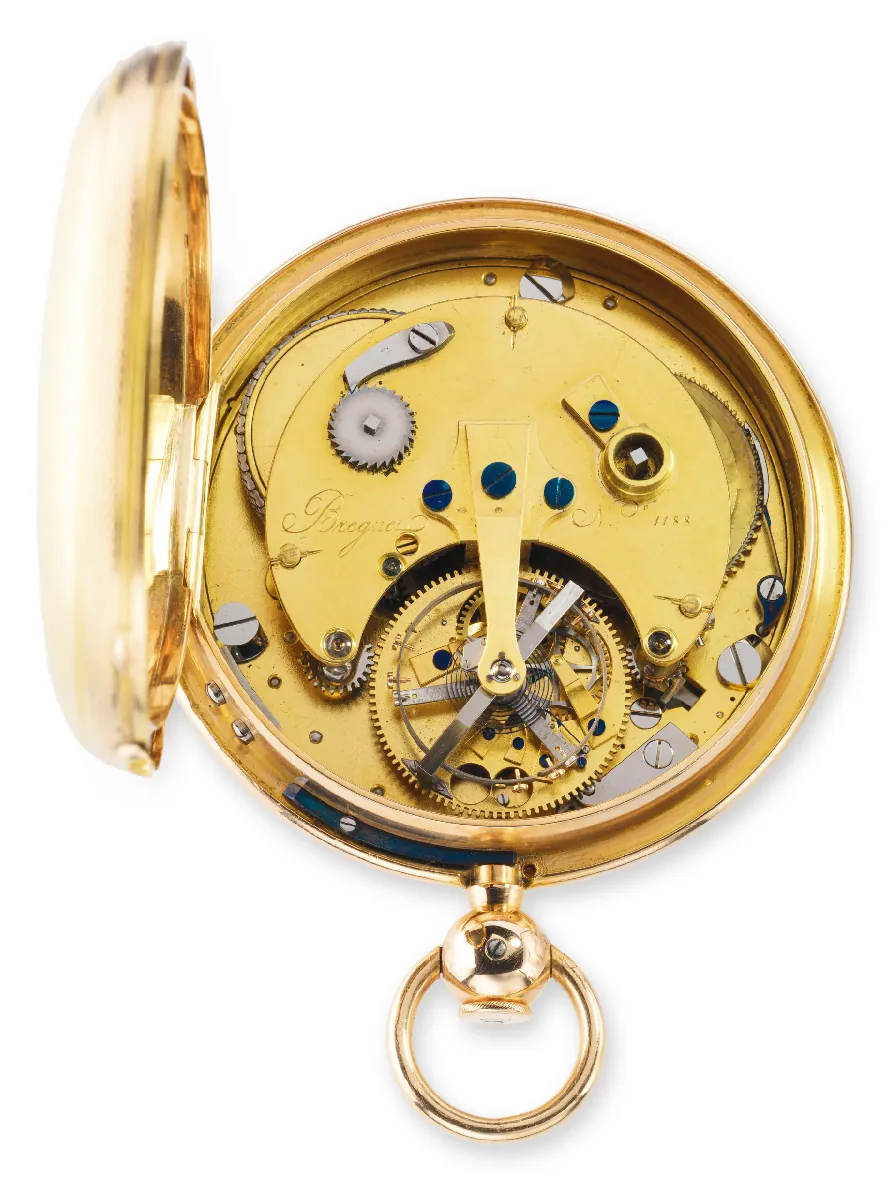Born in Neuchâtel in 1747, Abraham-Louis Breguet was introduced to his future profession by his stepfather, a watchmaker himself. He took his first steps in horology in Versailles, under Ferdinand Berthoud and Jean-Antoine Lépine, then moved the short distance to Paris where he set up shop on Ile de la Cité in 1775. It was here, in the City of Light, that Abraham-Louis Breguet would spend most of his life and here that he conceived of the ideas that would transform the mechanical watch. His brilliant mind embraced every aspect of watchmaking, and so he began his career with a series of groundbreaking inventions: the self-winding or perpétuelle movement; the gong spring for repeater watches and the pare-chute shock protection system. Admired by Louis XVI and Marie-Antoinette, Breguet watches were fitted with innovative movements whose lever or cylinder escapement the master continued to refine.
Forced to flee France for Switzerland during the dark hours of the French Revolution, Abraham-Louis Breguet returned to Paris in 1792, bringing with him ideas for new inventions such as the Breguet balance spring, the first travelling clock (which he sold to Napoleon Bonaparte) the sympathique clock, the à tact watch and the tourbillon, which he patented in 1801. Breguet was introduced into every European court and quickly became the go-to watchmaker in the highest diplomatic, scientific, military and financial circles. Commissions poured in from prestigious patrons, including one from Caroline Murat, Queen of Naples, for whom Breguet made one of the first ever bracelet-watches, in 1810. Among his numerous distinctions, he was appointed to the Board of Longitudes in Paris, named horologist to the Royal Navy and accepted into the Academy of Sciences. Louis XVIII presented him with the Legion of Honour. On his death, in 1823, he was mourned as a man whose genius had revolutionised every branch of watchmaking.
1775
Abraham-Louis Breguet opened for business on Quai de l’Horloge, on Ile de la Cité in Paris.
1780
The perpétuelle watch, which wound itself by an oscillating weight, was the first in a long series of successful inventions.
1783
Designed the open-tipped hands now known as Breguet hands.
1783
Invention of the gong spring as an alternative to the traditional gong, which considerably reduced the thickness of striking watches.
1786
Guillochage (engine-turning) attracted Breguet’s interest for its aesthetic appeal, and for its functional qualities of protection, legibility (reducing reflections from a polished surface) and to define areas on the dial for different readings.
1789
Invention of the ratchet key or “Breguet key” that prevents winding in the wrong direction.
1790
Invention of the pare-chute shock protection system. The balance-wheel pivots have a conical shape and are held in dishes mounted on a strip spring.
1795
Invention of the ruby cylinder and the Breguet balance spring, whose last coil is bent up and over the spring to improve its concentric development.
1796
Launch of subscription watches. These large (61mm), simple watches with an enamel dial and one hand required a down payment of one-quarter of the price.
1798
Breguet showed his sympathique clock at the 1798 Exposition Nationale in Paris, comprising a clock and a pocket watch. The watch is set in a cradle on top of the clock, and is automatically adjusted and set to the correct time.
1798
Patent for a constant force escapement which uses the variable force from the wheels to wind a spring or a weight which imparts a constant impulse directly to the regulating organ.
1799
The first à tact watch with a system that indicates the time by touch.
1801
Awarded a ten-year patent, dated June 26, for a new type of regulator called a Tourbillon, in which the entire escapement is contained in a carriage that makes one rotation per minute.
1810
Made one of the first ever watches designed to be worn on the wrist, commissioned by the Queen of Naples and registered in Breguet’s books as N° 2639.
1820
The “observation” chronometer with double seconds enabled the measuring of intermediate times or the duration of two simultaneous events, a forerunner of the modern chronograph

